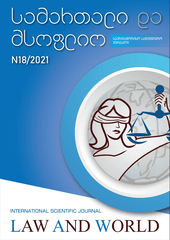Towards a Communicative Model of Language of International Law: From Linguistic Sign to Cognitive Complements 
##plugins.themes.bootstrap3.article.main##
Abstract
From past up to here one of the most important questions in international law has been focused on how interpretation of IL texts and instruments should be elaborated. Answering this question definitely, we could see the positive results. Despite all of the efforts of ICJ, UN special comities for conclusion of VCLT in 1969 and the other international law organs, we observe basic problems and inconveniences while trying to understand IL instruments and texts. Some scholars have tried to create links between hermeneutic, the knowledge of comprehending and interpreting texts, while the others, have tried to analyze in detail the unseen intentions of VCLT creators and writers specially when speaking about terms like “context” and “ordinary meaning”. We believe that deciphering some specific VCLT terms and also, understanding the true sense of language of international law is not possible but through interdisciplinary innovator sturdies which could show the necessity of understanding the “communicative language” designed for IL.






